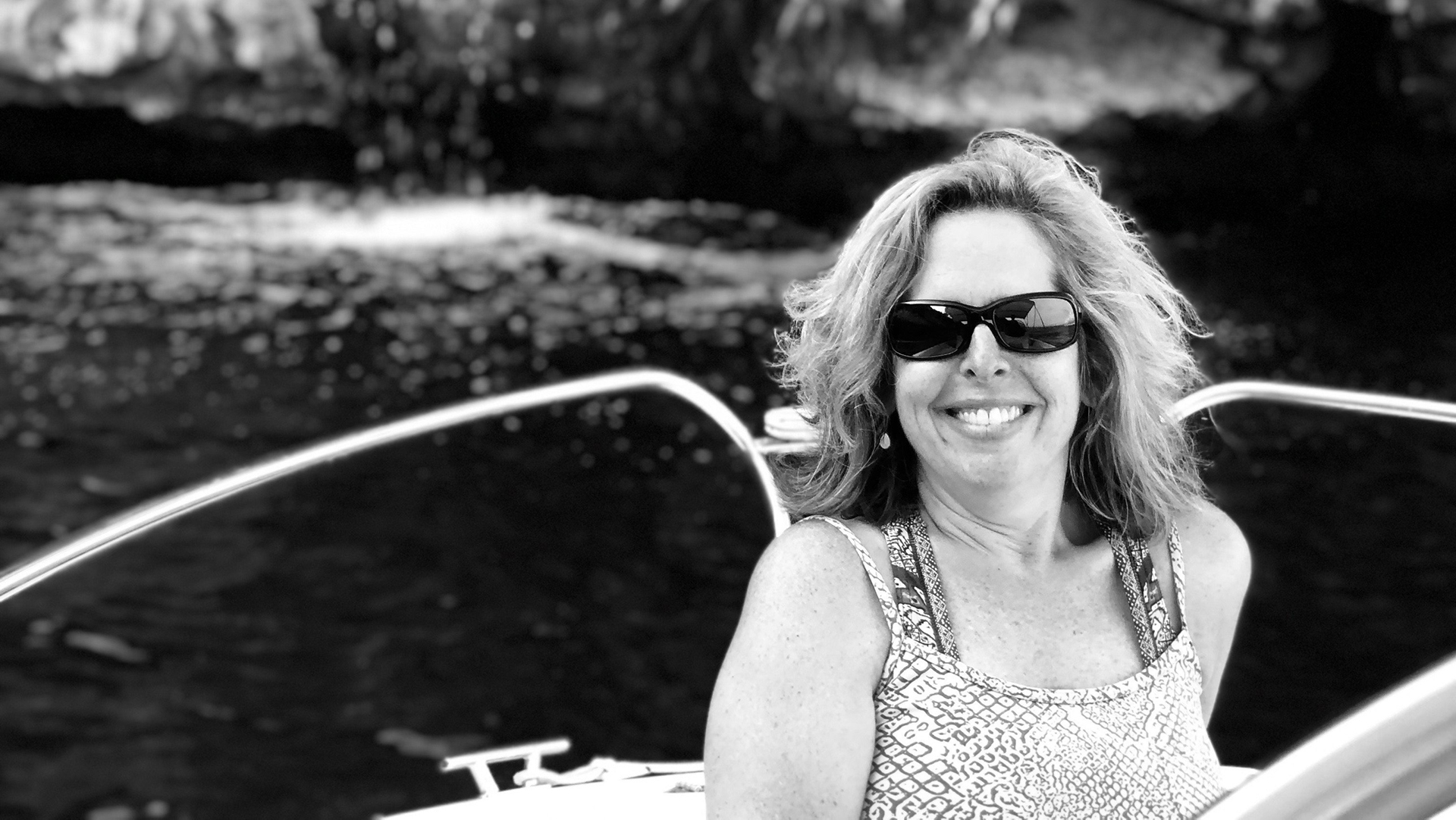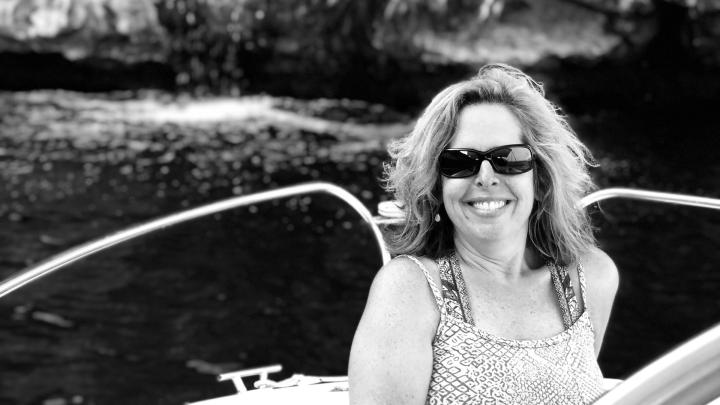Global Impact
Closed captions, open communication
For those who are deaf or hard of hearing, staying connected in a digital world can bring unexpected challenges. Here’s how we’re working to ensure equity and inclusion, whether in person or online.


Marianne Jodie Grote is a senior strategy analyst for WBA in the Diversity, Equity and Inclusion department. She’s also deaf. She began at WBA in March, shortly before the COVID-19 pandemic forced many corporate employees into remote working situations.
She spoke with WBA Stories about her experiences so far at WBA, the challenges of working in a remote environment, and advice for successful collaboration with deaf and hard of hearing colleagues.
Marianne worked with us to create this video that’s designed to be accessible to people of all hearing and visual abilities. She uses American Sign Language and also speaks verbally during this video:
Marianne's full interview is available below:
Tell us a little bit about your background.
I was raised by educated, curiosity-driven parents who both earned master’s degrees in healthcare management and in civil engineering. Although I was born deaf, I went to a hearing school with no interpreters. My parents, especially my mom, were the advocates for my younger sister’s and my education. It was difficult, but I always tried to show courage throughout my school years: working with teachers, making hearing friends and doing all the usual things for a student of my age. I played tennis all four years in high school (two years varsity), and I was even nominated to be Homecoming Queen!
In school, I took speech therapy and was provided a hearing itinerant teacher, who trains teachers on how to work with deaf and hard of hearing students in the classroom. In class, I would sit up front, and my teacher would make sure to look at me after they wrote anything on the board. They also made sure to repeat questions other students asked in case I couldn’t see them. I do wish that I had known sign language at the time – it really would have increased my language and technical knowledge.
At age 19, my world opened up and I began to learn more about the deaf community and culture, and finally learned American Sign Language. I earned a bachelor’s in Communications at University of Wisconsin-Milwaukee (UWM), a Master of Business Administration at the University of Arizona and a post-graduate Business Analytics certificate at UWM. My 20 years of professional work experience includes roles in advertising and telecommunications companies, and in nonprofit organizations, all relating to process management and analytics. I have volunteered my time to lead the cultural center boards in Chicago and New Mexico while working full time. I was the chair of the Chicago Deaf and Hard of Hearing Cultural Center from 2006 to 2008, and then I spent a year running the Deaf Culture Center of New Mexico, in Albuquerque, right before I got married.
My husband is also deaf and his daughter, my bonus daughter, is a sophomore in high school.
What resources does WBA offer deaf and hard of hearing employees?
A primary benefit WBA offers is live captions for Microsoft Teams meetings. WBA also offers VOYCE, a foreign/sign language interpreting service via video on-demand and on-site, along with documentation and written language translation in Spanish and other languages as needed. VOYCE is also being used at Walgreens stores in the U.S. for pharmacists to be able to communicate efficiently with their customers and patients.
WBA provides sign language interpreting services for all internal meetings as well as captions for weekly videos featuring messages from leadership.
The company also provides in-person sign language interpreters during the on-site new-hire orientation, which I was able to take advantage of when I joined the team.
Many of us are partially (or fully) working from home due to COVID-19. What are some challenges or benefits you've found when interacting with your team members virtually?
The benefits have included the ability to call an interpreter through video relay services without having to make a reservation so that the interpreter can sign for us during our Microsoft Teams meetings, even if it’s just for a quick 15-minute call with a colleague – like this one! The phone app Sorenson Wavello allows me to call my manager and take meetings with her online. Having meetings with the aid of a sign language interpreter ensures efficient communication between us.
Of course, there have also been a number of challenges. I believe all colleagues, not only deaf and hard of hearing employees, find it challenging to not be able to meet people in person during COVID-19. For those of us who are deaf or hard of hearing, it is even more difficult not to see our colleagues’ body language and facial expressions on a daily basis. If a colleague talks too fast or mumbles, they can be difficult to understand. Using live captions lets them see how what they say is being interpreted, and so the captions encourage them to speak slowly to articulate their words. Confusion can also occur when two people are talking at the same time – the captions become garbled on-screen.
Many people don’t realize looking at the screen involves a great deal of effort when it comes to multi-tasking. When I am watching a presenter on video, reading the live captions, seeing a sign language interpreter, and looking at a PowerPoint presentation all at the same time, it can be overwhelming. Deaf and hard of hearing meeting attendees would benefit from the occasional long pause, allowing us to catch up on the communication and participate in the dialogue. Having the interpreter and the team on the same screen is a challenge as well. Since Microsoft Teams automatically shows who is talking, someone who only signs is not able to participate fully. Pinning the interpreter or signing team member’s video panel to your screen 15 minutes prior to the meeting can ensure it works efficiently. Efficient communication helps bridge the flow between hearing and deaf or hard of hearing employees.
Finally, when I come to work at the office and my colleagues are wearing face masks to adhere to safety protocols, it’s a challenge because I’m not able to read lips or see facial expressions. Finding situations where we can create that six-foot distance helps to ensure we follow safety protocols while seeing each others’ face.
What are some of the ways people can be more mindful when working with a deaf or hard of hearing colleague?
Interacting with colleagues on a project is critical to any person involved in the process. Introducing your name prior to speaking to the group helps the interpreter or a captioner identify you for a deaf or hard of hearing person on the team. Remembering to speak one at a time and enunciating words clearly benefits all – not just deaf and hard of hearing teammates.
Having support from the management team makes a difference, and the Diversity, Equity and Inclusion department has been phenomenal. As a deaf employee, providing your management team what they need and knowing you’re put in position to deliver projects for them is a win-win.
It’s also important to speak up and openly communicate your needs to your manager. For me, this enables my manager to partner with our Employee Relations Accommodations team to provide the most effective solutions to help me thrive in my job. The more people speak up now, the more will be budgeted for accessibility in the future.
How can the job application and interview process be different for deaf and hard of hearing applicants?
The job application and interview process initially should not be any different than it would be for any other person. Each deaf and hard of hearing applicant’s communication needs are different. Don’t make the assumption that every deaf or hard of hearing person can read lips 100 percent of the time. There is a wide spectrum of deaf and hard of hearing people you will meet in your life, from a person who is fluent in American Sign Language to someone who speaks verbally. I encourage anyone interested to learn American Sign Language to facilitate communication with friends, colleagues and neighbors.
When we talk about a diverse and inclusive workplace, why is it also important to make sure that includes team members with disabilities?
It is good to include team members with disabilities because they offer a unique perspective, along with their talents and backgrounds. One thing to keep in mind: I did not create my disability. I was born deaf, I did not choose to be deaf. That is why we are on Earth: to be who we are, not to be different or receive pity from others.
Hiring deaf, hard of hearing and other people with disabilities adds value to the workplace in a number of ways, including their job-related talent. A diverse workforce, which includes people with disabilities, offers each individual’s unique perspective and serves to educate the whole organization – breaking stereotypes others may have had before they worked directly with someone with a disability. Another added benefit is that the entire workforce must be resourceful and work together to find creative solutions to seemingly simple tasks that they may have taken for granted before. For those of us with disabilities, we learned to be resourceful early on in life, through necessity, and we bring these skills into the workplace, applying them to everything we do.
Open-minded leaders and managers give people with disabilities, including deaf and hard of hearing employees, an opportunity to be hired and promoted from within. Walgreens Boots Alliance is committed to providing the resources needed for everyone to have the same opportunities to succeed.